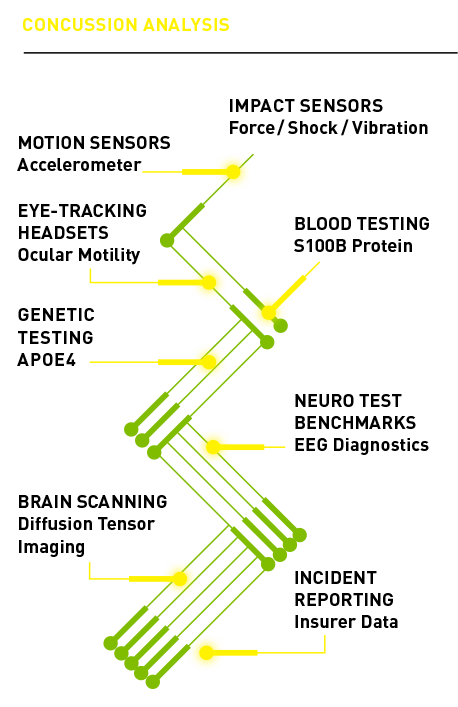Concussion-Factor Analysis
Boxing at the Rio Olympics eliminated headgear, due to a counterintuitive finding from the International Boxing Association: headgear was correlated with more concussions, not fewer. Not only does the soft padding not stop blunt force hits, but the bigger target leads to more head whips from blows. Concussion research is about to take huge strides as data is aggregated from an array of new sources. Motion and impact sensors on helmets, mouthguards and headbands are just part of it. Eye-tracking headsets have jumped from the labs to the sidelines to test athletes’ brain function immediately after any blow. Blood tests can now spot concussive trauma through elevated levels of the S100B protein. Every high school is requiring preseason benchmark neurological tests; insurers of youth leagues are now mandating head trauma incident reporting. All this data will be crossed with genetic testing for the APOE4 variant, which has been linked to concussions, and artificial intelligence will discover patterns heretofore unseen. Should helmets be hard and super-slippery to deflect impact? Or should they crush like car bumpers to absorb impact? We’re about to find out.

